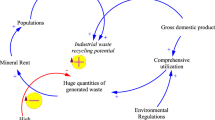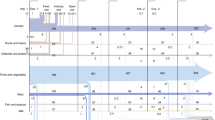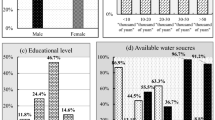Abstract
Innovative recycling technologies can help curb food waste, yet their implementation often involves trade-offs among different environmental issues and among environmental, economic and social issues. Monetization can provide a solution to integrate all environmental impacts across the life cycle of food waste and to enable a normalized evaluation with economic accounting. Herein, a Chinese regionalized monetization model was applied to various indicators related to the environment, resource depletion and human health to assess ten typical rural food waste recycling technologies in Zhejiang province. The results reveal that biodrying and maturity and two bioconversion options are promising solutions, considering both environmental and economic impacts as well as the shifting of environmental impacts among different compartments as hidden risks. The monetization method proposed here could be applied to other sectors to support decision-making towards more sustainable development.
This is a preview of subscription content, access via your institution
Access options
Access Nature and 54 other Nature Portfolio journals
Get Nature+, our best-value online-access subscription
$29.99 / 30 days
cancel any time
Subscribe to this journal
Receive 12 digital issues and online access to articles
$119.00 per year
only $9.92 per issue
Buy this article
- Purchase on Springer Link
- Instant access to full article PDF
Prices may be subject to local taxes which are calculated during checkout






Similar content being viewed by others
Data availability
The data supporting the findings of this study can be found in Supplementary Data 1. Source data are provided with this paper.
References
Fesenfeld, L., Rudolph, L. & Bernauer, T. Policy framing, design and feedback can increase public support for costly food waste regulation. Nat. Food 3, 227–235 (2022).
Makov, T., Shepon, A., Krones, J., Gupta, C. & Chertow, M. Social and environmental analysis of food waste abatement via the peer-to-peer sharing economy. Nat. Commun. 11, 1156 (2020).
Zhang, Y. Analysis on the present situation of rural domestic waste treatment in China. Adv. Environ. Prot. 07, 373–379 (2017).
The Seventh National Population Census (National Bureau of Statistics of China, 2020); http://www.stats.gov.cn/english/PressRelease/202105/t20210510_1817188.html
Xue, L. et al. China’s food loss and waste embodies increasing environmental impacts. Nat. Food 2, 519–528 (2021).
Albizzati, P. F., Tonini, D. & Astrup, T. F. A quantitative sustainability assessment of food waste management in the European Union. Environ. Sci. Technol. 55, 16099–16109 (2021).
Liu, F., Liu, H., Yang, N. & Wang, L. Comparative study of municipal solid waste incinerator fly ash reutilization in China: environmental and economic performances. Resour. Conserv. Recycl. 169, 105541 (2021).
Edwards, J., Burn, S., Crossin, E. & Othman, M. Life cycle costing of municipal food waste management systems: the effect of environmental externalities and transfer costs using local government case studies. Resour. Conserv. Recycl. 138, 118–129 (2018).
Martinez-Sanchez, V. et al. Evaluation of externality costs in life-cycle optimization of municipal solid waste management systems. Environ. Sci. Technol. 51, 3119–3127 (2017).
Nordahl, S. L. et al. Life-cycle greenhouse gas emissions and human health trade-offs of organic waste management strategies. Environ. Sci. Technol. 54, 9200–9209 (2020).
de Adelhart Toorop, R., Yates, J., Watkins, M., Bernard, J. & de Groot Ruiz, A. Methodologies for true cost accounting in the food sector. Nat. Food 2, 655–663 (2021).
Shapiro-Bengtsen, S., Hamelin, L., Bregnbæk, L., Zou, L. & Münster, M. Should residual biomass be used for fuels, power and heat, or materials? Assessing costs and environmental impacts for China in 2035. Energy Environ. Sci. 15, 1950–1966 (2022).
Baker, L., Castilleja, G., De Groot Ruiz, A. & Jones, A. Prospects for the true cost accounting of food systems. Nat. Food 1, 765–767 (2020).
Arendt, R., Bachmann, T. M., Motoshita, M., Bach, V. & Finkbeiner, M. Comparison of different monetization methods in LCA: a review. Sustainability 12, 10493 (2020).
De Bruyn, S. B. et al. Environmental Prices Handbook (CE Delft, 2018).
Inaba, A. & Itsubo, N. Preface of LIME3. Int. J. Life Cycle Assess. 23, 2271–2275 (2018).
Eldh, P. & Johansson, J. Weighting in LCA based on ecotaxes—development of a mid-point method and experiences from case studies. Int. J. Life Cycle Assess. 11, 81–88 (2006).
Wang, Q. et al. Life cycle assessment and the willingness to pay of waste polyester recycling. J. Clean. Prod. 234, 275–284 (2019).
Amadei, A. M., De Laurentiis, V. & Sala, S. A review of monetary valuation in life cycle assessment: state of the art and future needs. J. Clean. Prod. 329, 129668 (2021).
Monetary Valuation of Environmental Impacts and Related Environmental Aspects (International Organization for Standardization, 2019); https://www.iso.org/standard/43243.html
Wu, W., Li, X. & Zheng, L. Resource Reuse Technologies of Rural Food Waste in Villages and Towns (in Chinese). ISBN: 9787030690609 (China Science Publishing & Media Ltd., 2021).
Xiangru, L. Primary Study on Bio-drying and Maturing of Rural Biodegradable Waste (Zhejiang Univ., 2019).
Zou, Y. Out of sorts: rural waste problems in China and the United States. New Security Beat https://www.newsecuritybeat.org/2020/10/sorts-rural-waste-problems-china-united-states/ (2020).
Steen, B. Calculation of monetary values of environmental impacts from emissions and resource use: the case of using the EPS 2015d Impact Assessment Method. J. Sustain. Dev. 9, 15 (2016).
Weidema, B. P. Using the budget constraint to monetarise impact assessment results. Ecol. Econ. 68, 1591–1598 (2009).
De Nocker, L. D. & Debacker, W. Annex Monetisation of the MMG Method (Update 2017) (Public Waste Agency of Flanders (OVAM), 2018).
Ahlroth, S. F. & Finnveden, G. Ecovalue08—a new valuation set for environmental systems analysis tools. J. Clean. Prod. 19, 1994–2003 (2011).
Monetisation Factors for True Pricing v.2.0.3 (T.P. Foundation, 2021); https://trueprice.org/
EVR Model (Sustainability Impact Metrics, 2022); https://www.ecocostsvalue.com/evr/
Naylor, R. L. et al. A 20-year retrospective review of global aquaculture. Nature 591, 551–563 (2021).
Ogunmoroti, A., Liu, M., Li, M. & Liu, W. Unraveling the environmental impact of current and future food waste and its management in Chinese provinces. Resour. Environ. Sustain. 9, 100064 (2022).
Chen, T. et al. Economics analysis of food waste treatment in China and its influencing factors. Front. Environ. Sci. Eng. 15, 33 (2020).
Tonini, D. et al. Quantitative sustainability assessment of household food waste management in the Amsterdam Metropolitan Area. Resour. Conserv. Recycl. 160, 104854 (2020).
Liu, B. & Rajagopal, D. Life-cycle energy and climate benefits of energy recovery from wastes and biomass residues in the United States. Nat. Energy 4, 700–708 (2019).
Hanserud, O. S., Cherubini, F., Ogaard, A. F., Muller, D. B. & Brattebo, H. Choice of mineral fertilizer substitution principle strongly influences LCA environmental benefits of nutrient cycling in the agri-food system. Sci. Total Environ. 615, 219–227 (2018).
Yang, Q. et al. Prospective contributions of biomass pyrolysis to China’s 2050 carbon reduction and renewable energy goals. Nat. Commun. 12, 1698 (2021).
Wang, A. et al. Rural solid waste management in China: status, problems and challenges. Sustainability 9, 506 (2017).
IEA: Latest News, Commentaries and Reports (IEA, 2020); https://www.iea.org/
Herrero, M. et al. Innovation can accelerate the transition towards a sustainable food system. Nat. Food 1, 266–272 (2020).
Gil, J. Dietary carbon–water–food nexus. Nat. Food 3, 187 (2022).
D’Odorico, P. et al. The global food–energy–water nexus. Rev. Geophys. 56, 456–531 (2018).
Costanza, R. et al. The total value of the world’s ecosystem services and natural capital. Nature 387, 253–260 (1997).
Environmental Protection Tax (State Taxation Administration, 2018); http://www.chinatax.gov.cn/chinatax/n610/c5178958/content.html
FineBI v.5.1 https://www.finebi.com/ (FanRuan Software, 2019).
Niu, J. Monetary Methods of Life Cycle Impact Assessment for Inert Construction and Demolition Waste (in Chinese) (Qinghai Univ., 2019); https://doi.org/10.27740/d.cnki.gqhdx.2019.000102
Bare, J. TRACI 2.0: the tool for the reduction and assessment of chemical and other environmental impacts 2.0. Clean Technol. Environ. Policy 13, 687–696 (2011).
Huijbregts, M. et al. ReCiPe 2016 (RIVM, 2016); https://rivm.openrepository.com/handle/10029/620793
RIVM (National Institute for Public Health and the Environment, 2017); https://www.rivm.nl/en
de Baan, L., Alkemade, R. & Koellner, T. Land use impacts on biodiversity in LCA: a global approach. Int. J. Life Cycle Assess. 18, 1216–1230 (2013).
China Ecological Environment Bulletin (Ministry of Ecology and Environment of People’s Republic of China, 2006); https://www.mee.gov.cn/hjzl/sthjzk/zghjzkgb/
National Radiation Monitoring (National Radiation Environment Monitoring Network, 2020); http://www.rmtc.org.cn/hjzl/jcbg/fshjzlbg/
Media/Ministry Report (East China Inspection Bureau, Ministry of Ecology and Environment, 2020); https://hddc.mee.gov.cn/hdyq/zjs/202006/t20200630_786613.shtml
Media Report: Why Zhejiang Rural Household Garbage Classification in the Forefront of the Country (Zhejiang, 2019); https://town.zjol.com.cn/cstts/201907/t20190711_10566409.shtml
Lv, F., Hua, Z., Liping, H., Li-ming, S. & Pin-jing, H. Analysis on the Treatment Technology of Organic Fraction of Municipal Solid Waste in the Neighborhood or On-Site (in Chinese) (Environmental Sanitation Engineering, 2020).
Acknowledgements
We acknowledge support from the Westlake Education Foundation and the Research Center for Industries of the Future at Westlake University (L.W.), the Zhejiang Provincial Department of Science and Technology (grant no. 2023SDXHDX0006, L.W.), and the Key Research and Development Project of Zhejiang Province, China (grant nos 2021C03024 and 2022C03001, W.W.). We thank X. Yang (at Westlake University) for his assistance in manuscript editing, the Westlake Language Center for providing their services and FanRuan Software Co, Ltd 2019 for providing free service in figure drafting.
Author information
Authors and Affiliations
Contributions
F.L. and L.W. conceptualized the project and devised the methodology. F.L. managed the software, wrote the original draft of the paper and visualized the data. F.L., L.X., H.T., L.Z., X.D., Y.Z., W.W. and L.W. validated the results. F.L. and L.X. conducted the formal analysis. F.L., L.X., H.T., Y.Q., L.Z., X.D. and L.W. conducted the investigation. F.L., L.X., H.T., Y.Q. and L.Z. curated the data. L.X., W.W. and L.W. revised the manuscript. W.W. and L.W. provided the resources and acquired the funding for the project. L.W. supervised the project and reviewed and edited the manuscript.
Corresponding authors
Ethics declarations
Competing interests
The authors declare no competing interests.
Peer review
Peer review information
Nature Food thanks the anonymous reviewers for their contribution to the peer review of this work.
Additional information
Publisher’s note Springer Nature remains neutral with regard to jurisdictional claims in published maps and institutional affiliations.
Supplementary information
Supplementary Information
Supplementary Main, Results, Methods, Figs. 1–8, Tables 1–8 and references.
Supplementary Data 1
The assumptions, relevant pollution equivalent values, applicable taxes in 31 provinces, estimation details of the monetization method Chinatax, LCA and LCC results, monetization results in 31 provinces, and sensitivity analysis datasets (sheets 0 to 25).
Source data
Source Data Fig. 2
Source data for the monetization factors in ten monetization methods and for the monetization factors of ChinataxRCP in China’s 31 provinces.
Source Data Fig. 3
LCA results of ten rural food waste treatment technologies for nine environmental impact categories.
Source Data Fig. 4
Monetization results for nine rural food waste management technologies.
Source Data Fig. 5
Economic analysis source data and potential trade-offs between environmental and economic analysis results for rural food waste management technologies.
Source Data Fig. 6
Scenario analysis source data for monetization results using different substitution methods and under various policy scenarios.
Rights and permissions
Springer Nature or its licensor (e.g. a society or other partner) holds exclusive rights to this article under a publishing agreement with the author(s) or other rightsholder(s); author self-archiving of the accepted manuscript version of this article is solely governed by the terms of such publishing agreement and applicable law.
About this article
Cite this article
Liu, F., Xin, L., Tang, H. et al. Regionalized life-cycle monetization can support the transition to sustainable rural food waste management in China. Nat Food 4, 797–809 (2023). https://doi.org/10.1038/s43016-023-00842-6
Received:
Accepted:
Published:
Issue Date:
DOI: https://doi.org/10.1038/s43016-023-00842-6



